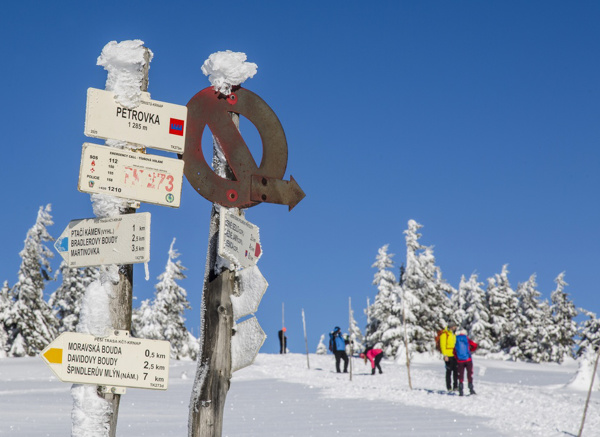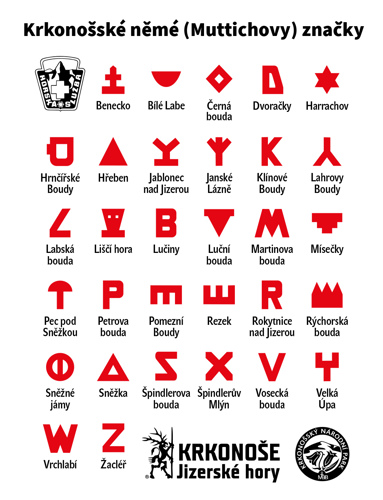In case of danger, keep calm and follow these instructions:
If you go off the tourist trail
go back to where you last saw the trail. In an emergency, look for a prominent point in the terrain (a rock, signpost or sign), find a trauma point sign at intersections and some places and call for help. Don't let the group fall apart.
In case of a storm
quickly escape from the ridges. Do not hide under trees standing alone. If you can't run, stay and squat with your feet together - you won't be affected by the so-called step tension. If you are in a group of people, spread out, don't crowd!
During the first signs of rapid weather changes
get back to the cottage in time. Do not shorten your route outside the marked hiking trails.
In a serious accident
give the injured person first aid and stabilize him in a safe and visible place. Call the emergency services.
Encounter with the wolf
Wolves are currently moving regularly in the Krkonoše Mountains. We are one of the areas with a permanent presence of this large beast. The wolf is a shy animal in front of humans, but young wolves can be curious. You will most likely not meet them, especially on marked roads. There is such a possibility when moving in the forest off the roads. If you encounter a wolf at a distance of more than 30 m, it is rare, but completely normal and there is nothing to worry about. Do not approach wolves, lure them in any way, or try to feed them. Give the wolf time to leave. Young wolves can be inquisitive and rarely approach even at short distances. They will almost certainly leave again quickly. If not, you can drive them away with a loud voice or noise. If possible, always keep your own dogs on a leash - wolves can see them as competition in the forest, and any conflict rarely ends well for the dog.
We will be happy if you report your encounters with wolves to us by e-mail: kmikslova@krnap.cz, phone: 731 533 895. We record wolf sightings in detail, which helps us compile an up-to-date map of wolf occurrence in the Krkonoše Mountains and track other connections.
| SAVE EMERGENCY PHONE NUMBERS: | |
|---|---|
| INTERNATIONAL EMERGENCY LINE | 112 |
| MOUNTAIN SERVICE EMERGENCY LINE | 1210 |
| KRKONOŠE MOUNTAIN SERVICE | +420 602 448 338 |
| MOUNTAIN SERVICES OF THE JIZERSKÉ MOUNTAINS | +420 483 380 073 |
| GOPR (IN POLAND) EMERGENCY TELEPHONE |
985 nebo +48 601 100 300 |



 Familiarize yourself with the route on the map in advance. Plan it so that you, even the slowest in the group, will be at the finish line before dark.
Familiarize yourself with the route on the map in advance. Plan it so that you, even the slowest in the group, will be at the finish line before dark.